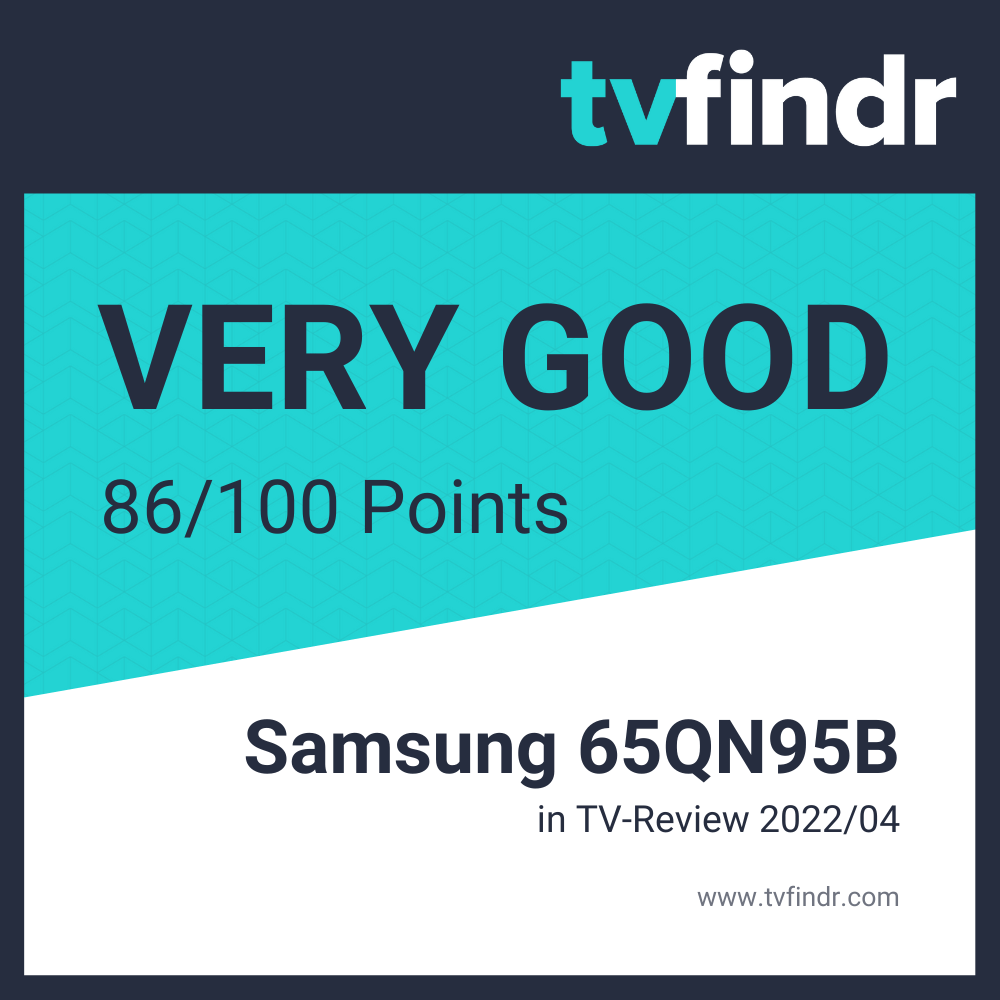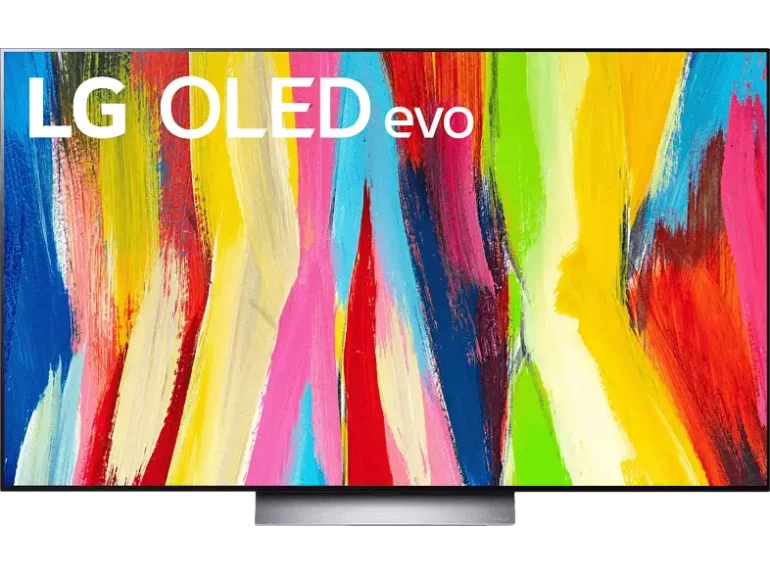VA, IPS, OLED & Co
In this article we give you an insight into the different panel types which are used in the screens of the current televisions. We explain what is behind the abbreviations LCD, VA, IPS, FALD and OLED.
LCD Panels
Most TVs available today feature LED-LCD panels. This means that the backlight is created by LEDs and an LCD layer creates colors on the screen. Televisions almost exclusively use VA or IPS LCD displays. Terms such as “QLED” or “NanoCell” refer to additional layers on the screen for more accurate colors.
LCD Subpixel
Normally, each individual pixel consists of three subpixels in the colors red, green and blue. If you mix these three light colors, you get white. In order to create a color other than white, the crystals of the corresponding subpixel must be charged by an electric voltage and change their orientation so that they no longer let the light of their color through. This is where the term LCD (Liquid Crystal Display) comes from.
VA-LCD Panels
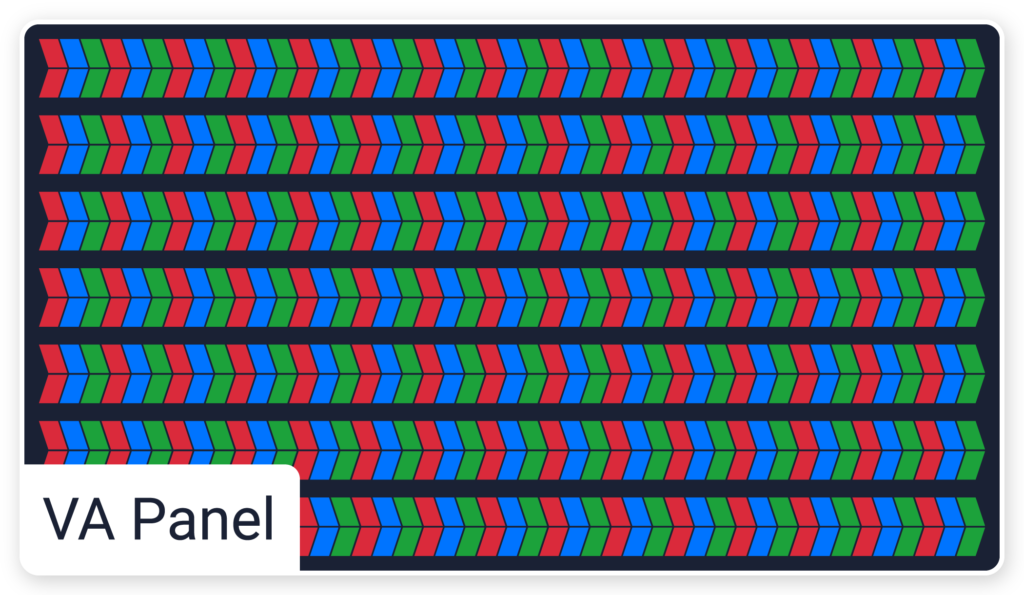
VA stands for “Vertical Allignment“, which means that the crystals do not transmit light in the vertical orientation. As soon as they are electrically charged, their orientation changes to the horizontal and they let the light of their color through.
In their name-giving vertical orientation, VA panels can very well block the light from the backlight, creating deep blacks. This usually results in a contrast ratio of over 4000:1.
The disadvantage of VA panels is that the picture quality decreases rapidly as the viewing angle increases. If viewed at an angle, the contrast drops considerably and the image looks washed-out quickly.
On some TVs, such as the Samsung NEO QLED QN90B where an additional layer is on the screen that counteracts the viewing angle problem.
This layer is at the expense of the contrast. But as contrast ratio is high enough on the TVs mentioned, it’s barely noticeable.
IPS-LCD Panels
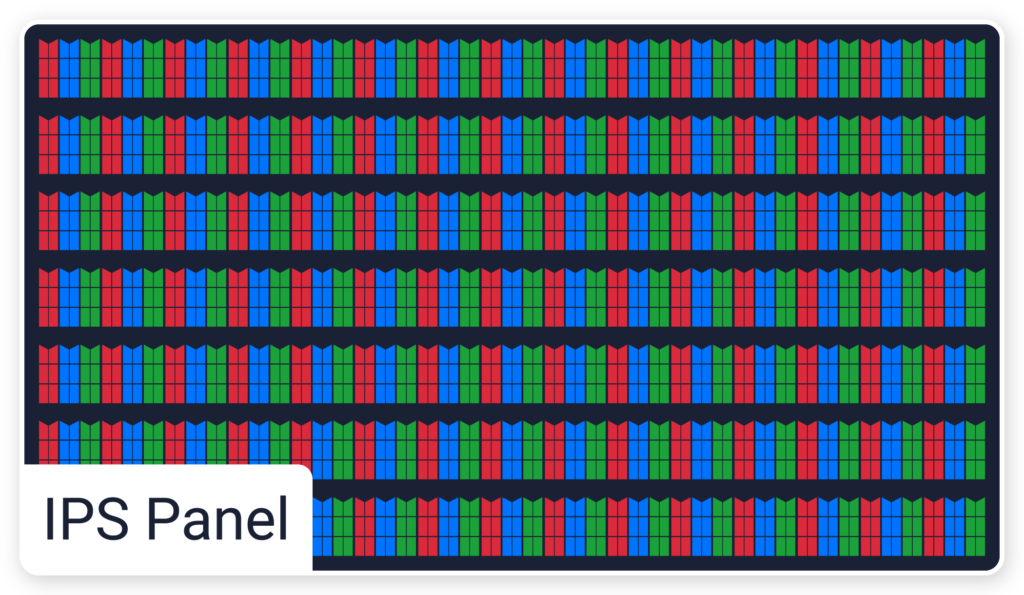
IPS stands for “In Plane Switching“, which means “changing in the plane”. If the crystals are not to let light through, they lie horizontally, parallel to the screen (plane). If they are to let light through, they rotate along the horizontal axis and thus remain parallel to the plane (-> In Plane).
The disadvantage of IPS panels is that the crystals cannot block the light from the backlight too well.
So IPS-LCD TVs don’t have such deep blacks and typically only a contrast of about 1000:1.The advantage of an IPS panel is that the picture quality remains fairly consistent if viewed at an angle.
The contrast and color intensity as well as the authenticity of the colors are largely retained. IPS panels are somewhat cheaper in production than VA panels, which is why they are used in the majority of entry-level devices.
Samsung calls this technology PLS (Plane-to-Line Switching), which is just another name for the same technology. You would only recognize it under high magnification, because the subpixels have a different shape.
Backlight & Local Dimming
As mentioned at the beginning, they are actually LED-LCD televisions. Because every LCD TV needs a backlight and this is nowadays generated by LEDs. The LEDs either sit at the edge (usually the lower edge) of the screen (= Edge Lit) or directly behind the screen (= Direct LED).
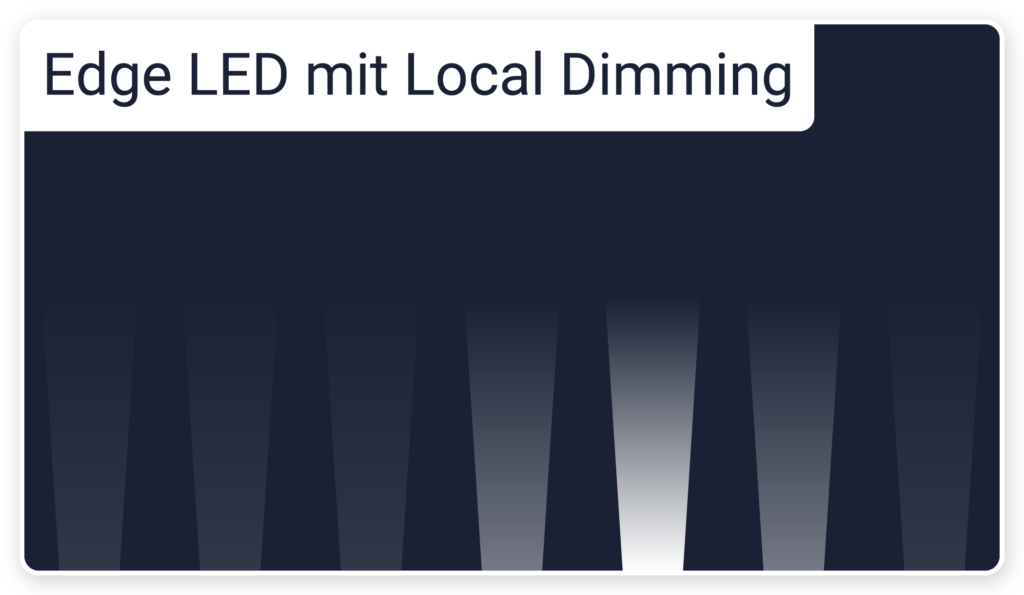
Unfortunately this backlight will always slightly shine through the liquid crystal layer. That’s why more expensive models have local dimming features.
While 2018 models often had Edge Lit Local Dimming, which could only dim (mostly) vertical stripes, from 2019 you will usually get Full Array Local Dimming (FALD) if a TV has a Local Dimming feature.
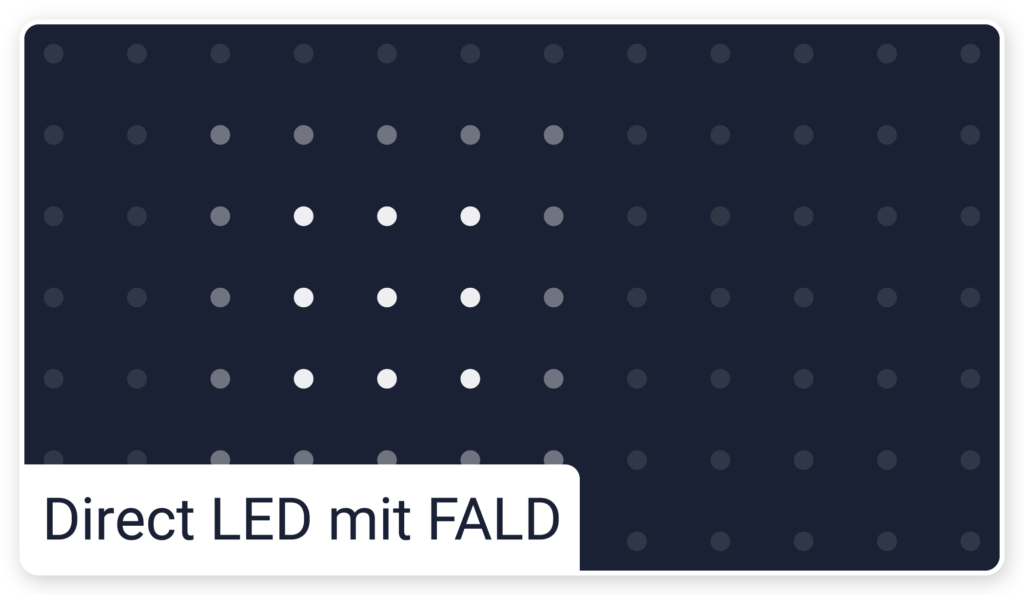
Full Array Local Dimming
Full Array Local Dimming divides the backlight LEDs into different zones, which can then be dimmed separately. How well the Full Array Local Dimming influences contrast ratio and picture quality depends on several factors, namely the number of zones, the dimming algorithm and of course the type of panel. Too few zones or a bad dimming algorithm can lead to unwanted issues such as clouding or blooming. With IPS panels, the problems are generally greater because of the lower native contrast ratio.
One of the cheapest current TVs with local dimming would be the LG NANO85, which has a very poor Edge Lit Local Dimming feature. The Sony X90J, for example, has a solid Full Array Local Dimming, with 24 dimming zones and a good algorithm delivers a really high-contrast picture. The best Full Array Local Dimming currently available (under 10.000$) can be found in the Samsung Q90B. For example, the 65-inch variant has 720 individual dimming zones and a very good algorithm.
OLED Panels
OLED panels are a completely different technology than LCDs, because OLED panels do not require backlighting. OLED stands for “organic light emitting diode“, which means that all subpixels emit light themselves or not.
This results in almost perfect black levels and thus also a theoretically infinite contrast. (Since there is no perfect black, the contrast ratio isn’t really infinite:1, but very high; about 1.000.000:1).
Furthermore, an OLED has no problems with the backlighting or the local dimming, as each pixel can be illuminated individually.
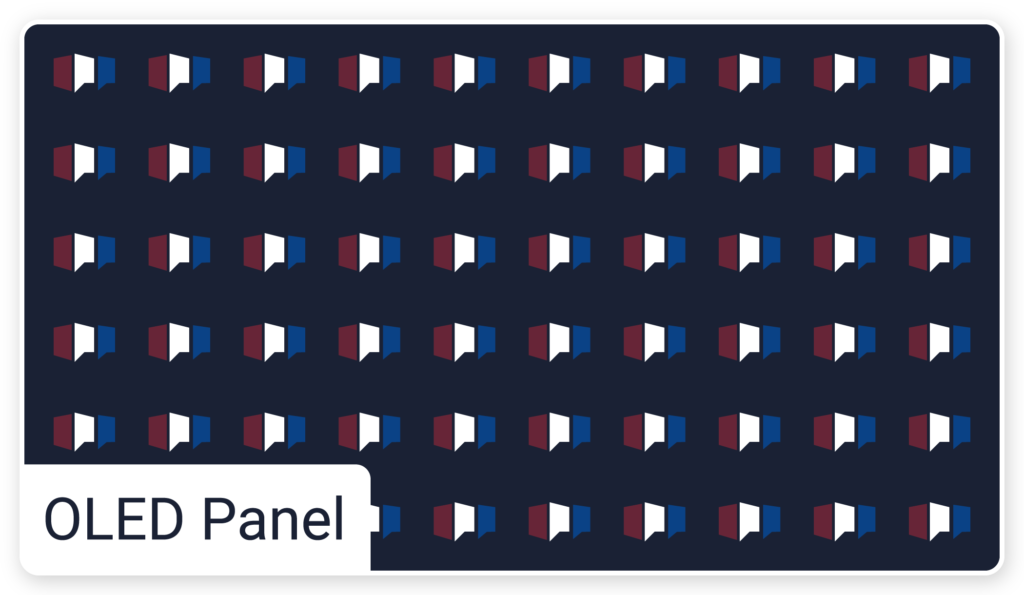
They all have a WRGB pixel structure, which means that each pixel consists 4 subpixels in the colors white, red, green and blue.The white subpixel is added to increase the otherwise poor brightness.
This, however, makes it difficult for the display to display bright, popping (= saturated) colors. In large bright scenes, all pixels must be dimmed down to avoid damage to the panel (ABL: Automatic Brightness Limiter).
QD OLEDs
In January 2022, Samsung presented the new QD OLED for the first time with a new technology that promises an even brighter and more colorful OLED TV. The new display has an additional blue OLED layer that is self-luminous.
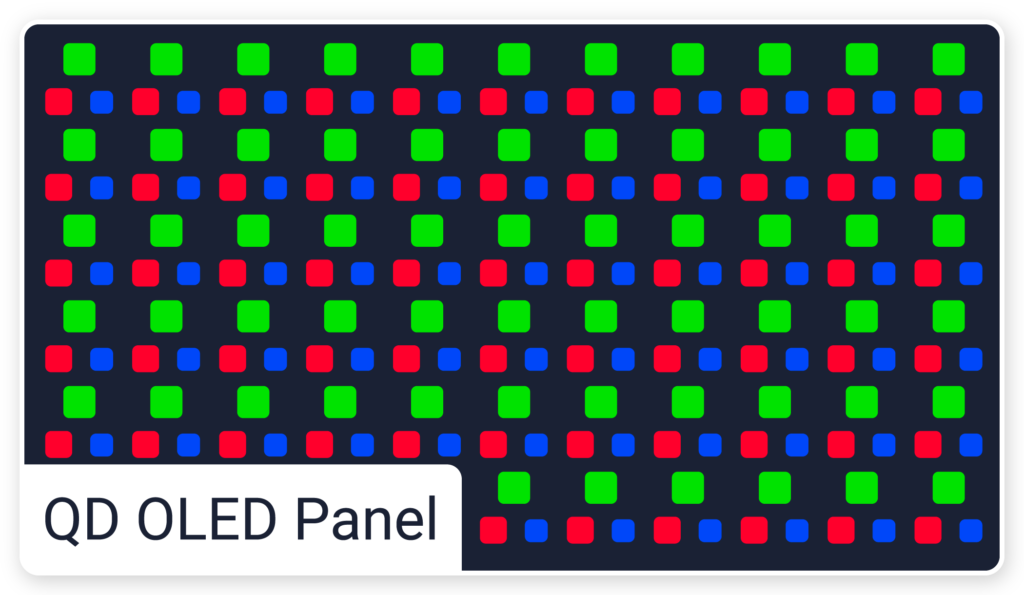
The familiar red and green quantum dots sit on top of it, which can display even more colors together with the OLED layer. This is because the OLED layer consists of many individual pixels that are individually controlled and can therefore emit their light individually. A white sub pixel no longer exists.
Die QD-OLEDs, die es von Samsung und Sony gibt, können so noch heller werden und bieten darüber hinaus sämtliche Vorzüge eines normalen OLED-Panels.
Burn-In risk
Theoretically, OLEDs can get the so-called “Burn-In” effect. By displaying very bright, static content over a really long period of time, the luminosity of the corresponding subpixels can decrease. Meanwhile the countermeasures work so well that Burn-In is hardly worth mentioning. For example, during normal use (including console gaming), the first shadows would only be visible after several thousands of hours. Only for very special uses, such as in the office, an OLED is not advisable because of the burn-in. The risk still exists with QD OLEDs, even though it is much lower here.
OLED televisions are available from more and more manufacturers. That’s why there is now a healthy competition. You get OLED TVs of course from LG, but also from Sony, Hisense or Metz Blue and many more. Even Samsung, who have actually retired from the OLED sector, want to start producing OLED TVs again under the name QD-OLED.
Finally, it should be mentioned that OLED displays are not only extremely thin, but can also be flexible and it is even possible to develop transparent OLED TVs.
Technologies of the future
You can get an insight into the new technologies of the future through our interviews with the manufacturers at CES 2021. In the course of this, it is also interesting to take a look at the new mini-LED technology, which could soon compete with the popular OLED technology.

